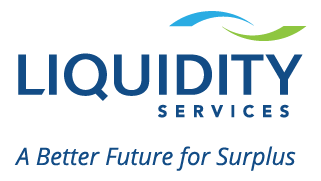All energy equipment eventually reaches the end of its life and is slated for decommission or plugging and abandonment. When this happens, energy companies must find ways to dispose of assets in a manner that is both budget- and environmentally-friendly.
Through proven decommissioning and remarketing strategies, energy organizations can recover the costs of decommissioning – and then some – while mitigating all potential environmental, health, and safety risks. This article will detail the three steps for minimizing these risks and maximizing the value on the sales of surplus assets.
Step 1: Decommission Assets Effectively
Follow this six-step process to ensure a smooth, effective decommissioning process.
- Planning. Your decommissioning plan should be created well in advance of the actual process. A comprehensive plan will detail all steps for decommissioning the equipment, removing it from your site and managing all environmental, health, and safety risks.
- Identification. Determine which assets have superior resale potential and which should be scrapped. Choosing to sell or scrap depends on the recovery rate you can expect from an asset sale. If it’s too low, it may be best to scrap or recycle it.
- Permitting. Obtain all proper permits, such as compliance plans and identification of personnel, and get your work plan approved by appropriate regulatory authorities.
- Preparation. Determine which assets will be redeployed internally and which will be sold. For the assets you plan to sell, you should create a marketing plan for your equipment and prepare a sales location or storage yard for your surplus.
- Equipment Removal. Work closely with contractors to limit damage to equipment during removal – especially equipment you plan to redeploy or sell.
- Site Clearance. Ensure the site is clear of obstructions and adheres to safety and compliance rules.
Step 2: Maximize Recovery Through Proven Sales Methods
After being decommissioned, equipment that still has value and hasn’t been redeployed should be sold in secondary markets. Follow these remarketing best practices to maximize recovery.

- Understand Equipment Value. In general, the most valuable 20 percent of equipment brings in 80 percent of the total recovery value. Focus most of your efforts on selling these high-value assets.
- Determine Marketing Channel(s). You should consider traditional marketing channels such as print ads and trade shows. Digital channels, such as email marketing, social media, and low-cost ads on inventory-listing websites can also be effective ways to reach the right customers.
- Identify Sales Channel(s). Online auctions reach large, global buyer networks and are the best choice for common, high-demand assets. The private treaty method, which focuses on a select group of prospective buyers, is ideal for specialized energy equipment.
- Provide Complete Equipment Information. For online sales, be sure to include detailed product descriptions, high-quality pictures and the asset’s original documentation. This information gives prospective buyers confidence in the quality of assets, increasing their interest and bid amounts.
Step 3: Strategically Scrap Assets
Even if some of your surplus assets cannot be sold, you can find ways to either recycle them or sell them for scrap. This has two strategic benefits: Rather than sending unsold surplus to a landfill, you’re finding a way to dispose of the assets in a way that supports sustainability goals. Beyond benefiting the environment and improving your brand image, selling surplus for scrap still provides some recovery on the assets.
It’s best to sell your scrap through an auction or bidding process, leveraging a broad marketing platform wherever possible to reach the most possible buyers. Typically, competitive auctions and sealed bid processes can generate much higher scrap recovery than traditional sales methods.
Why You Should Work With a Surplus Management Partner
Since remarketing surplus energy equipment is a non-core business function, energy companies often look for a third-party provider that specializes in surplus asset solutions. Surplus asset management and plant decommissioning take a lot of time and manpower. Additionally, it requires expertise in marketing and sales of surplus, as well as the ability to vet buyers and ensure compliance in all sales. For these reasons, it’s best to outsource these tasks to a trusted provider so you can focus on your core competencies.
Liquidity Services has extensive experience partnering with the world’s leading energy companies to successfully decommission their assets and receive maximum recovery value for them. Contact us to learn more about what we can do for you.



Comments are closed.